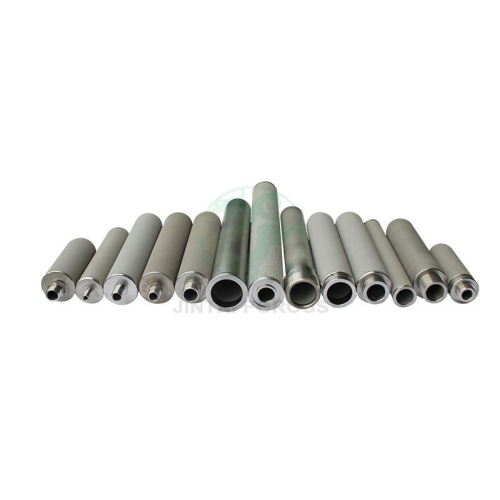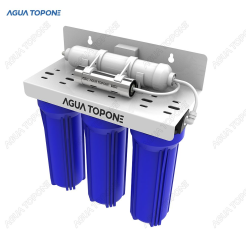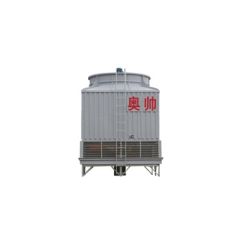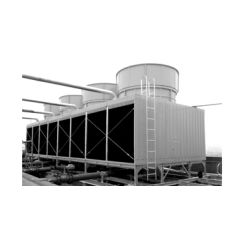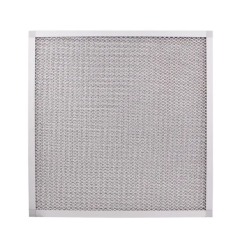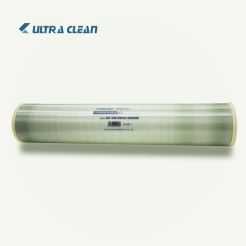Porous Metal Tubes
The porous metal tubes can be connected to other metal parts to form a whole. Porous Metal Pipe of Jintai Company can be customized in various specifications according to customer requirements meet customer's process requirements.
Product Description
High rigidity: most types of metals through sintering offer a strong structure
Anti-corrosion: especially in acid or alkali solutions
Large dirt holding capacity: can be used with a longer lifetime
High filtration precision: high particles removal efficiency of 0.1-200 micron
High-temperature resistance: maximum 550℃ at the operating environment
Easy to clean: with several cleaning methods, especially suit for backwashing
Customization: Details/options like length, diameter, thickness, materials can be altered
The size is accurate: The minimum tolerance can reach 0.1mm
Rich specifications and models
Can make special-shaped parts
Lower surface roughness
Specifications
| Material selection | Titanium Stainless steel: 316L, 304L, 310S, 321, 904L Hastelloy C22 C276 X Inconel 600 Monel 400 Nickel Other materials required by the customer |
| Filtration Grade | 0.1um 0.3um 0.5um 1um 3um 5um 10um 15um 20um 30um 50um 80um 100um Other grade required by the customer |
| Data & Specifications | OD: Min. 4mmID: Min. 2.5mm Length: Min. 2mm Thickness: Min. 1mm, Max. 6mm Other specifications and sizes required by customers |
Application
304L stainless-steel was used for equipment and also mechanical element, which shows superb properties especially corrosion resistance and also formability. The applications covered food industry, chemical engineering and atomic energy. By the use of climatic corrosion resistance and heat resistance.
316L stainless steel was used in sever problems such as seawater, chemistry, paper making, oxalic acid, plant food and also various other problems.
Such as: Muffler, Current limiter, Flame arrestor, Buffer, Various filtration and also aeration, etc.
Suitable environment: Nitric acid, sulphuric acid (concentration about 96%), acetic acid, boric acid, nitrous acid, oxalic acid, alkali, hydrogen sulfide, acetylene, heavy steam, seawater, liquated natrium, liquid nitrogen, fluid hydrogen, liquid helium, phosphoric acid, hydrochloric acid (focus regarding 5%), air, hydrogen.
With high porosity, remarkable gas permeability, as well as low differential pressure, Jintai sintered tubes are available for different application areas, such as fluid & gas filtration of petroleum, polyester filtration, chemical fiber filtration, and also water filtration.
Your Irreplaceable Sintered Metal Tube Manufacturer in China - Jintai
Jintai sintered metal tube is a type of filter elements that contain multi-layer cord meshes or metal powder by sintering. Jintai mainlymanufactures sintered stainless-steel tube, porous metal tube, sintered bronze tube, and so on.
Jintai sintered metal tube pays more attention to production trouble from precision, like an easily neglected bit chipping problem of the edge. Fortunately, our knowledgeable production workers resolved it with our innovative vacuum cleaner sintering equipment.
Additionally, every Jintai sintered metal tube is checked purely with bubble point test according to ISO 4003 as well as air permeability test according to ISO 4022, to make sure premium quality and also please your unique precision demand.
Jintai Sintered Stainless Steel Tube
Jintai sintered stainless steel metal tubeis made from numerous multi-layer stainless-steel cable fits together, or sintered by stainless-steel powder. It does exceptional deterioration resistance, high mechanical strength, is a cost-efficient option contrasted to nickel sintered tube. Jintai sintered porous metal tube can withstand high operating stress of 3000psi with noticeable mechanical toughness as well as rigidity. Besides, it features uniform pore distribution along with high permeability, supplying a smooth and also fast flow for your filtration.
F&Q
What is Sintered Metal Tube?
The sintered metal tube is a stainless-steel metal mesh filter rolled with multiple layers of perforated metal sintered to form a line.
What are the Features of Sintered Metal Tube?
Wide variation of filtration ranking ranges between 1 micrometer and 250 micrometers or more.
Diverse sizes can have smaller sized inner dimensions of up to 10 mm.
Excellent mechanical strength with the ability to preserve better filtration performance under pressure
Basic design that enhances the simplicity of cleansing, specifical backwashing
What Materials are Sintered Metal Tube constructed from?
Among the materials you can utilize is stainless steel, which displays very high mechanical stamina and deterioration resistance.
Apart from stainless steel, you can also use bronze materials with excellent deterioration resistance.
Nevertheless, it is relatively weak and does not have the tremendous mechanical and tensile strength to support high-pressure applications.
You can likewise incorporate nickel and its alloys amongst the materials for manufacturing sintered metal tubes.
Which Factors Affect the Cost of the Sintered Metal Tubes?
Usually, you will spend between different prices bucks to acquire various kinds of sintered metal tubes.
You will undoubtedly realize that the price variation comes from various sintered metal tubes.
Exactly how Does a Sintered Metal Tube Work?
Depending on the position of the sintered metal tubes in the filtration section, the fluid will undoubtedly go through the filter.
As it passes through the sintered metal tubes, there will be a modification in pressure where the pressure will go down.
The pressure drop suggests a reduced moving rate along the sintered metal tube lines.
This enhances the moment that the fluid takes while traveling through the min pores of the sintered metal tubes.
As that occurs, the larger-sized contaminants will undoubtedly fall short of passing through the pores and allow clean fluid to continue.
As a result of tiny pore sizes, the impurities will be caught pending a short-lived backwash that will get rid of the contaminants.
It will also guide the contaminants to the departure point of the sintered metal tubes, thus eliminating them for good.
The clean fluid will also proceed to the fluid exit point for additional processing actions.
How do you Manufacture Sintered Metal tubes?
1) Preparation of the Materials
2) Shaping the Materials
3) Heating Under Furnace
What are the available Sizes of Sintered Metal Tube?
Sintered metal tubes are available in different sizes depending upon the application demands.
To put it simply, you will certainly specify the inner and exterior diameter and the length of the sintered metal tubes.
What are the Advantages of Using the Sintered Metal Tubes?
Great Shape Stability
High Mechanical Strength
Controllable Porosity
Good Permeability
Great Thermal Shock as well as Corrosion Resistance
Easy to Shape or Mold
Easy to Clean as well as Maintain
Proper Pore Distribution
Are there Limitations of Using the Sintered Metal Tubes?
You can only use it for particular filtrate sorts of fluids, therefore, limiting your application range.
How Do You Increase the Efficiency of the Sintered Metal Tubes?
Here are some of the needed adjustments you can make on the sintered metal tubes to increase efficiency.
Regular Cleaning
Maintain Proper Working Records
Replace the Broken Parts
Maintain Stability
What is the Maximum Temperature Range for Different Gauges of Sintered Metal Tubes?
| Temperature Range | ||
| Material | Oxidizing | Reducing or Neutral |
| Stainless-steel 316L | 400 | 540 |
| Stainless-steel 310 | 600 | 800 |
| Inconel | 600 | 800 |
| Hastelloy | 800 | 930 |
| You should note that all the temperature values are in degrees centigrade. | ||
How Does the Sintered Metal Disc Compare to the Sintered Metal Tube?
Sintered metal discs and sintered metal tubes have pores of varying sizes that aid in the filtration process.
In addition to that, sintered metal discs and tubes have similar types of materials, including nickel or stainless steel, to name a few.
You will manufacture sintered metal tubes and sintered metal discs using the very same process of sintering.
Sintered metal discs think of a disc shape, while sintered metal tubes feel the form of a box.
How Do You Maintain the Sintered Metal Tube?
The maintenance process of the sintered metal tubes involves the correct cleaning of the gadget.
It would help to preserve tidiness on the sintered metal tubes to increase their efficiency.
So, all you need to do is have a maintenance timetable that permits you to clean the filters consistently.
You will have the correct time timetable for every cleaning activity in the upkeep routine.
As an example, you will undoubtedly know when to backwash the filters to get rid of contaminants.
Besides that, you will undoubtedly know when the filters must be uninstalled for complete cleaning.
You will also know the service life of the sintered metal tube.
Implying that, you will certainly understand when to change the sintered metal tubes since it has tired its life span.
What are the Applications of Sintered Metal Tube?
FoodFood and also Beverage Industry
etroleum Industry
Gas Production Industry
Hydroelectric Power Production
Why should you Import Sintered Metal Tubes from China?
Below are several factors that must oblige you to buy your products from China.
Wide Variety of Sintered Metal Tubes
High-Quality Sintered Metal Tubes
Affordable Prices
Great Transport and Communication Infrastructure
Ease of Conducting Business
How Many Pore Sizes of Sintered Metal Tubes exist?
The pore sizes vary according to the type of application you will certainly be involved in.
What is the Difference Between the Sintered Metal Tube and Sintered Stainless-Steel Plate?
Sintered metal tubes are an advanced variation of the sintered stainless-steel plates.
The Number Of Surface Finishes of Sintered Metal Tubes are There?
Sandblasting Surface Finish
Brightening with various techniques such as lapping and also buffing
Do You Supply Pleated Sintered Metal Tubes?
Yes, we supply pleated sintered metal tubes that increase the filtration area hence the efficiency of filtration.
An increase in the number of wrinkles will suggest an increase in the filtration efficiency of the sintered metal tubes.
Exactly How Do Porous Sintered Metal Tubes as well as Pleated Sintered Metal Tubes Compare?
The main distinction between the porous and pleated sintered metal tubes is the efficiency levels.
Are Sintered Metal Tubes like Sintered Metal Filters?
No, sintered metal tubes and sintered metal filters are two different types of filtration materials.
How do you Control the Quality of Sintered Metal Tubes?
Materials
Manufacturing Equipment
Manufacturing Process
For all your sintered metal tubes, contact Jintai now.
